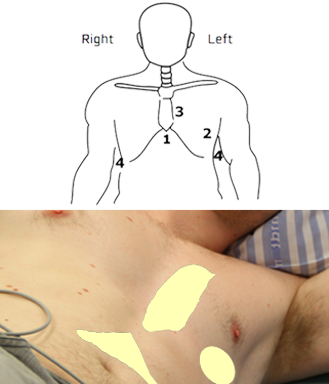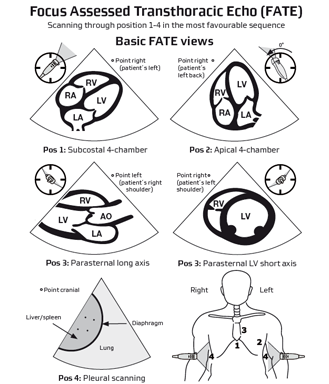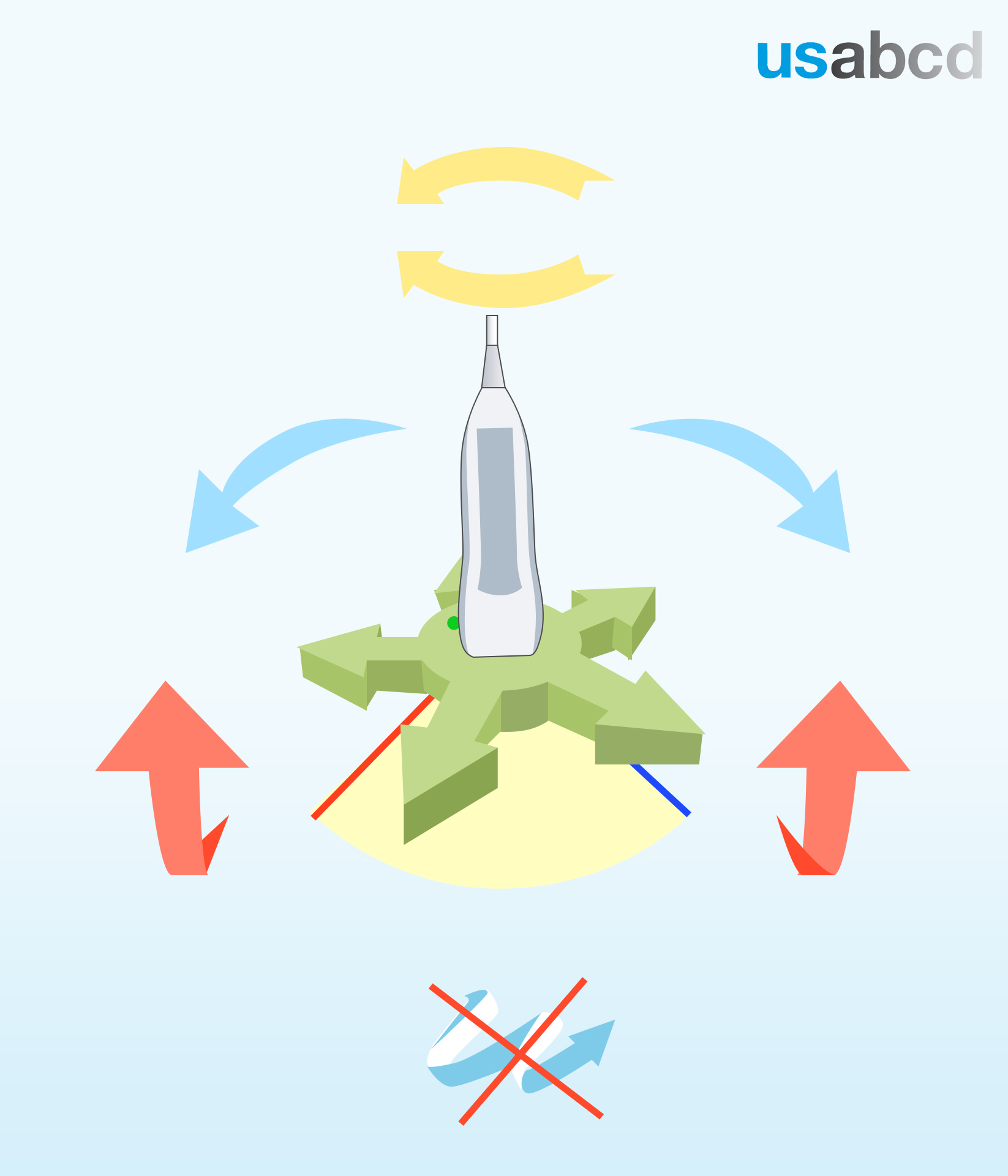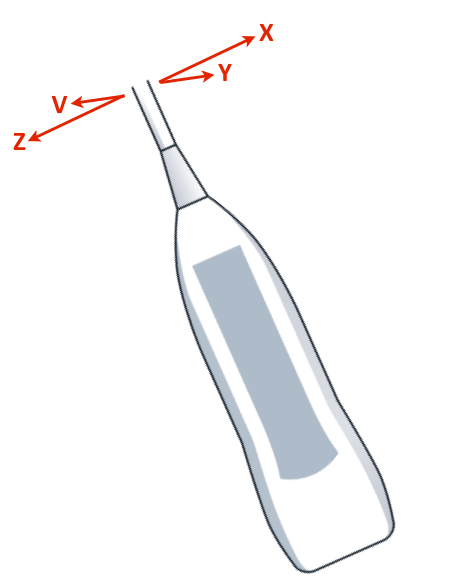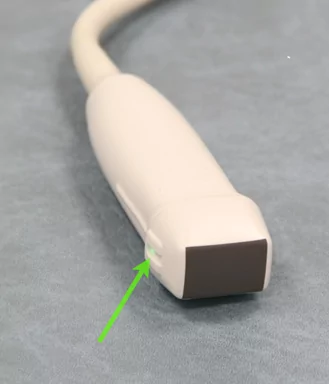A full basic FATE examination includes images of the heart and pleura obtained from four different positions, or “windows”, on the thorax
From these positions 6 imaging views can be achieved:
– Position 1: Subcostal 4-chamber view
– Position 2: Apical 4-chamber view
– Position 3: Parasternal views. The long-axis and short-axis view
– Position 4: Pleural views. Right pleura and left pleura
This lesson will give an overview of the 6 imaging views and how to achieve them
